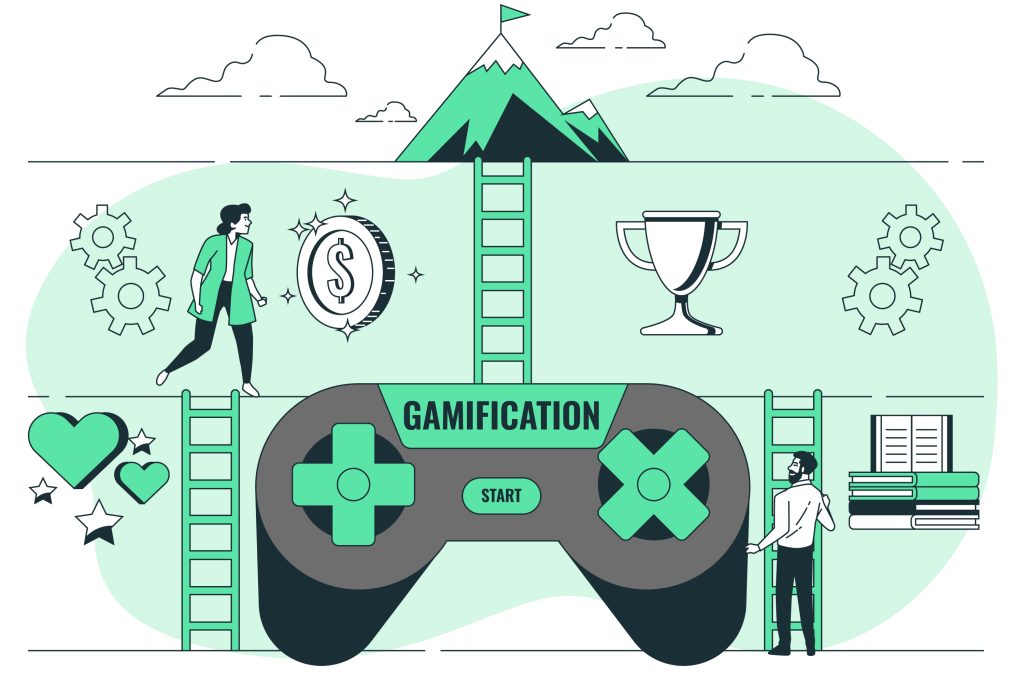How Gamification Transforms Learning Outcomes

Top Learning Design Trends to Watch for in 2025
November 21, 2024
Today, capturing and retaining learners’ attention is one of the biggest challenges faced by educators and organizations. Traditional teaching methods often fail to engage learners who are accustomed to interactive, stimulating, and visually appealing digital content. This is where gamification in learning steps in—a revolutionary approach that integrates game mechanics into educational environments to make learning not only effective but also enjoyable.
Gamification is no longer a buzzword but a proven methodology that transforms how individuals acquire knowledge and skills. From boosting learner engagement to enhancing knowledge retention, gamification has far-reaching impacts. This blog post explores how gamification transforms learning outcomes and why it is a game-changer for educators, organizations, and learners alike.
Curious to learn more about gamification and how you can leverage it for your learning goals? Don’t miss Alula Learning’s Free Webinar on Gamification, happening on Saturday, December 7th, 2024. Secure your spot today by registering here.
The Science Behind Gamification
Gamification works because it aligns with the way our brains are wired. Here are some of the psychological principles that make gamified learning effective:
- Motivation and Engagement
Gamification taps into intrinsic and extrinsic motivators. Intrinsic motivators, like curiosity and a desire to achieve mastery, are complemented by extrinsic rewards such as points or badges. This dual motivation keeps learners invested in the process. - Dopamine Activation
The reward system in gamification activates dopamine—a chemical associated with pleasure and motivation. Each time a learner earns a badge or reaches a new level, their brain releases dopamine, reinforcing positive behaviors and encouraging continued participation. - Immediate Feedback
Gamified systems provide instant feedback, enabling learners to track their progress and adjust their strategies. This constant loop of action and reaction fosters a growth mindset, encouraging learners to persevere through challenges. - Social Connectivity
Leaderboards and multiplayer elements in gamification encourage collaboration and healthy competition, fostering a sense of community among learners.
How Gamification Transforms Learning Outcomes
Gamification is not just about making learning fun; it’s about achieving measurable improvements in learning outcomes. Here’s how:
1. Enhanced Engagement
Traditional learning methods can feel monotonous and uninspiring, leading to disengagement. Gamification transforms learning into an adventure, where learners feel excited and motivated to participate actively. The interactive nature of gamified content captures attention and sustains interest.
2. Improved Knowledge Retention
Studies have shown that gamified learning experiences improve retention rates. By breaking down complex concepts into smaller, digestible challenges, learners are more likely to remember what they’ve learned. Gamification also reinforces learning through repetition and practice.
3. Better Skill Development
Gamification provides a safe environment for learners to develop and hone their skills. Whether it’s mastering a new language or learning technical skills, gamified platforms allow learners to practice without the fear of failure.
4. Real-Time Performance Tracking
With gamification, learners and instructors can track progress in real time. Analytics tools integrated into gamified systems offer insights into performance, helping identify strengths and areas for improvement.
5. Boosted Collaboration and Teamwork
Team-based gamified activities foster collaboration and teach learners the value of working together to achieve common goals. This is particularly useful in workplace training programs where teamwork is crucial.
6. Increased Motivation to Complete Courses
Dropout rates in traditional learning programs can be high due to lack of interest or motivation. Gamification, with its rewards and challenges, encourages learners to complete their courses and achieve their goals.
Conclusion
Gamification is more than a trend—it’s a powerful tool that reshapes the way we learn. By making education interactive, engaging, and rewarding, gamification paves the way for better learning outcomes across diverse settings. Whether you’re an educator looking to inspire your students or a corporate trainer aiming to upskill your employees, gamification offers a proven approach to achieving your goals.



